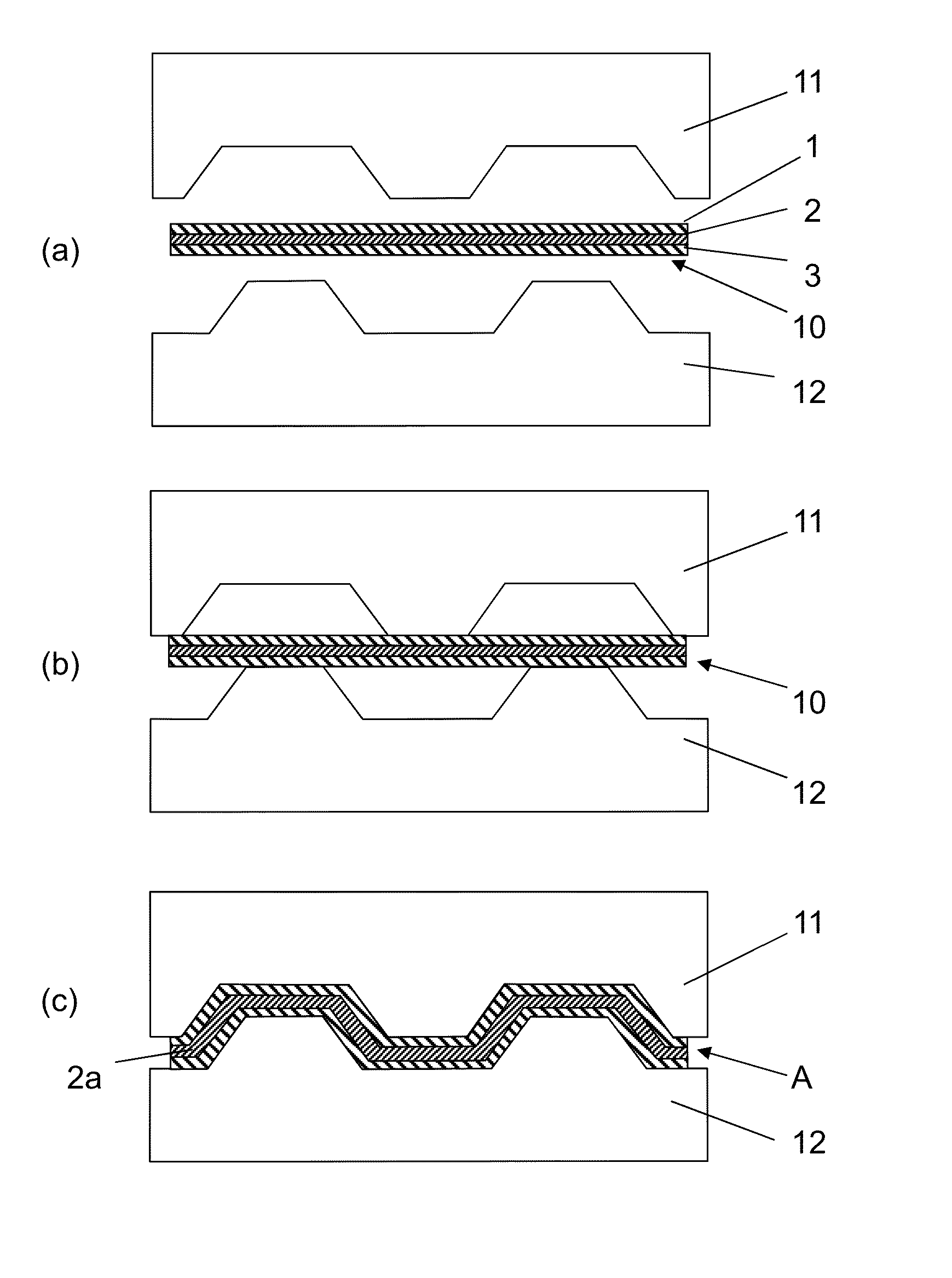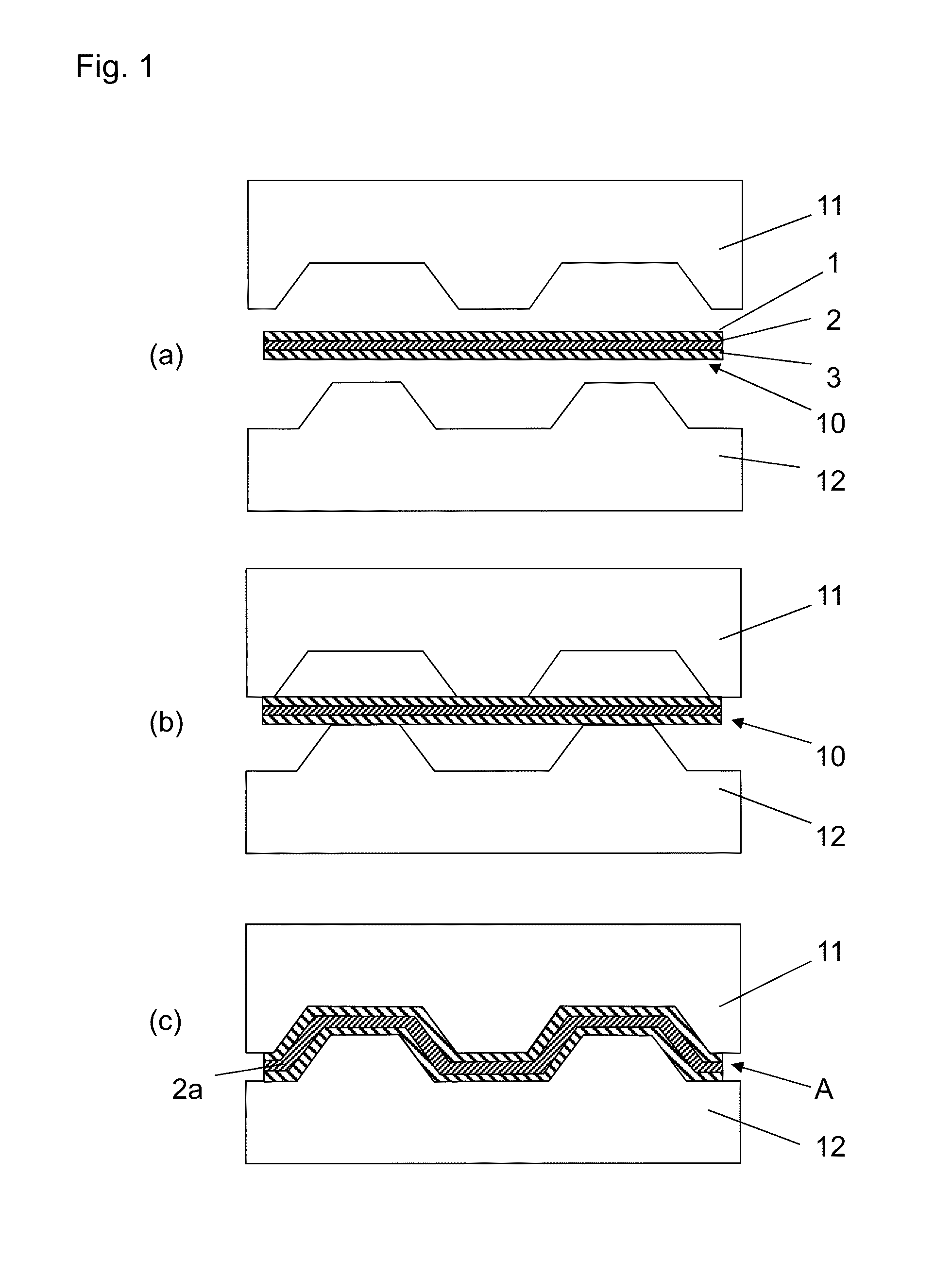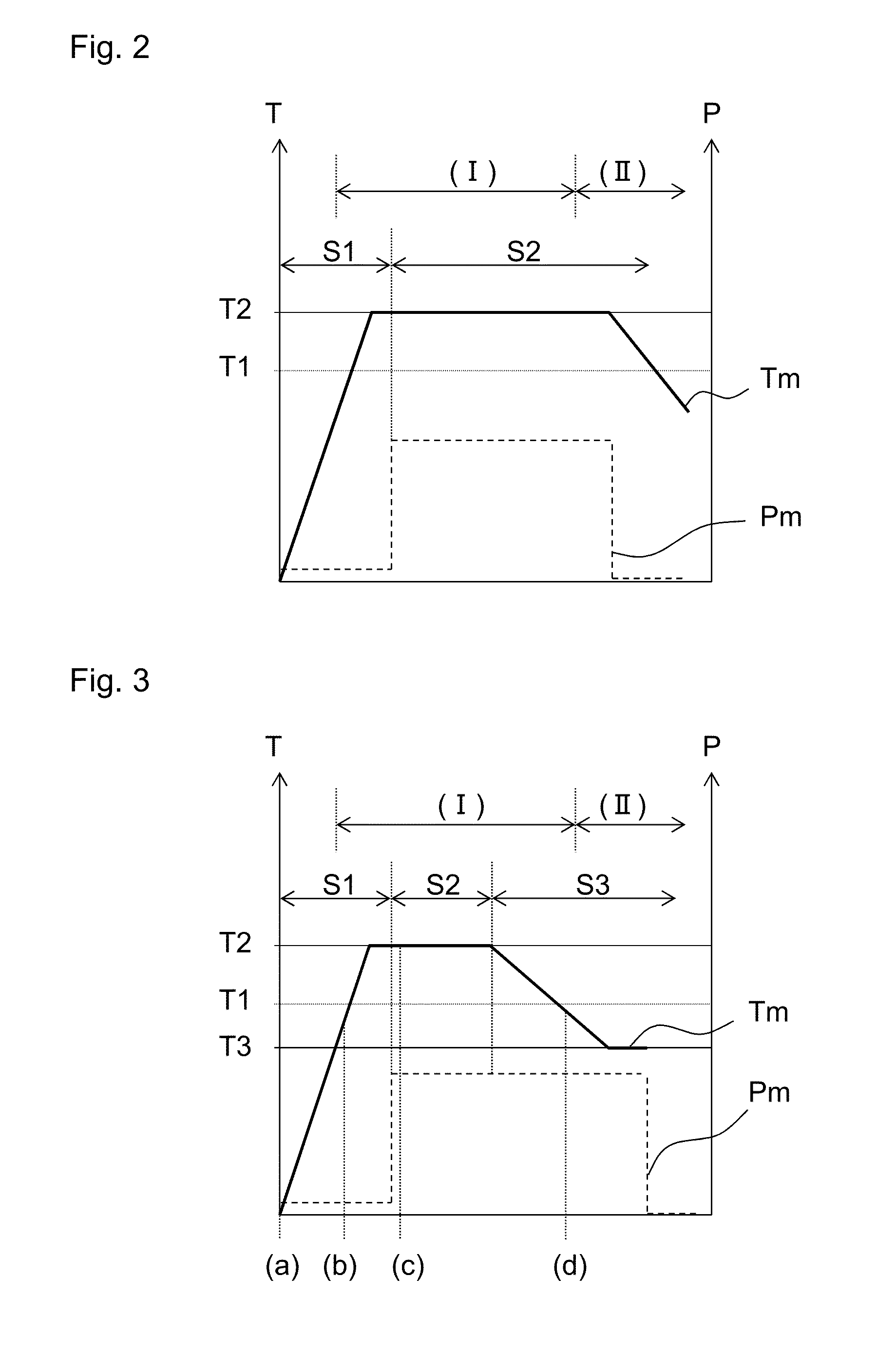Method for producing metal composite, and chassis for electronic equipment
a metal composite and electronic equipment technology, applied in the direction of casings/cabinets/drawers, instruments, casings/cabinets/drawers details, etc., can solve the problems of low composite production efficiency, difficult to ensure the required bonding strength, flaking of metal composites, etc., to achieve excellent amenability to thin-walling, high degree of design freedom, and high degree of rigidity.
- Summary
- Abstract
- Description
- Claims
- Application Information
AI Technical Summary
Benefits of technology
Problems solved by technology
Method used
Image
Examples
example 1-(
13)
[0242]The same setup as Example 1-(9) was used, except that industrial pure titanium plates (KS40) were adopted as metal materials. The manufacturing conditions and evaluation results for Example 1-(13) are shown in Table 9 and Table 10.
Comparative Example 1-(1)
Preparation of Preform
[0243]Using the same method as Example 1-(1), except that the thermosetting resin was mixed at the composition mass ratio shown in Table 11, a metal composite was produced.
[0244]Here, using press molding equipment, the sheet substrate was mounted on a plate with a surface temperature of 130° C. and simultaneously heated and compressed at 1 MPa for 10 minutes. The glass transition temperature (Tg) of the resin in the obtained metal composite was measured and found to be 75° C. Since this glass transition temperature (Tg) was 52% of the saturated glass transition temperature (Tg), the resin was confirmed to be in a semi-cured state.
[0245]Production of Metal Composite:
[0246]As illustrated in FIG. 1 (b), ...
example 2-(
6)
[0281]The same preform as the Example 2-(1) was used. About 30 seconds after heating in the step 1 began, compression in the step 2 was started, and about 30 seconds later, cooling water was passed through the upper mold and the lower mold as the step 3 to cool them to 180° C. or less, with their temperature setting changed to 170° C. About 2 minutes after cooling began, the surface temperature of the metal material fell to 180° C. or less, and compression was applied for about 1 minute thereafter. After this, the mold was opened, and the metal composite was taken out of it, followed by 10 minutes post curing performed by placing the metal composite into a hot air furnace whose ambient temperature had been adjusted to 150° C. The obtained metal composite was evaluated in the same manner as Example 2-(1). The manufacturing conditions and evaluation results for Example 2-(6) are shown in Table 15 and Table 16.
Comparative Example 2-(1)
Preparation of Preform
[0282]Using the same method...
example 3-(
7)
Preparation of Thermosetting Resin
[0329]The thermosetting resin was prepared as a resin composition under the same conditions as Example 3-(1), except that the composition mass ratio was changed to the one shown in Table 23.
[0330]The prepared resin composition was subjected to a glass transition temperature (Tg) measurement using the same measurement method as Example 3-(1). The glass transition temperature (Tg) of the resin composition was 6° C., while the saturated glass transition temperature (Tg), which had been reached through curing, was 136° C. It can be said that, when the glass transition temperature (Tg) is in the 13 to 117° C. range, the resin composition is in a semi-cured state.
[0331]The relationship between the heating temperature, heating duration and glass transition temperature (Tg) of the prepared resin composition was examined in the same manner as Example 3-(1). With the heating temperature fixed at 130° C. and 150° C., the glass transition temperature (Tg) was...
PUM
| Property | Measurement | Unit |
|---|---|---|
| temperature | aaaaa | aaaaa |
| surface temperature | aaaaa | aaaaa |
| surface temperature | aaaaa | aaaaa |
Abstract
Description
Claims
Application Information
 Login to View More
Login to View More - R&D
- Intellectual Property
- Life Sciences
- Materials
- Tech Scout
- Unparalleled Data Quality
- Higher Quality Content
- 60% Fewer Hallucinations
Browse by: Latest US Patents, China's latest patents, Technical Efficacy Thesaurus, Application Domain, Technology Topic, Popular Technical Reports.
© 2025 PatSnap. All rights reserved.Legal|Privacy policy|Modern Slavery Act Transparency Statement|Sitemap|About US| Contact US: help@patsnap.com



